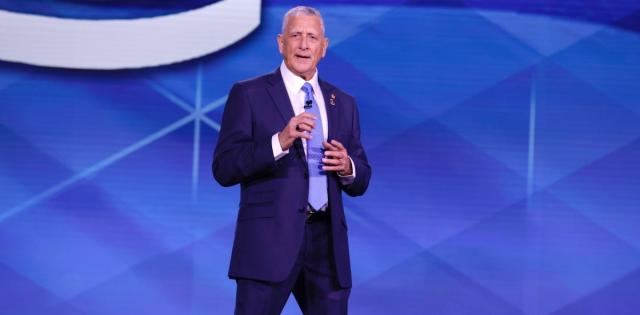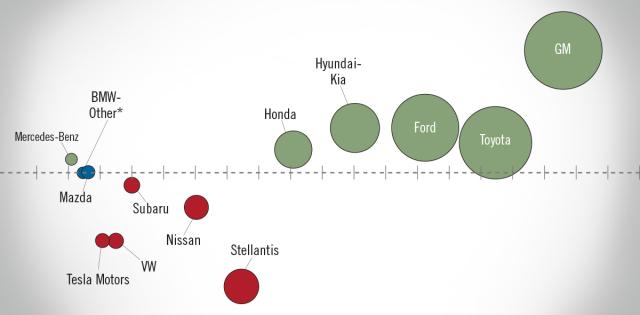The wave of electric vehicles (EVs) coming into the market brings a new consideration to the consumer buying experience. Price is always a significant factor in choosing a new vehicle, as is the total cost of ownership. Combining purchase price with a cost of ownership estimate has always been a helpful way to evaluate whether a certain vehicle is right for an individual, especially when thinking about cost in terms of monthly payments or annual expenditures.
The same is true of both ICE and electric vehicles. But new data about EVs specifically illustrates the importance of weighing cost of ownership when assessing the total “cost” of owning an EV compared to an ICE vehicle.
Kelley Blue Book calculates the five-year cost to own a vehicle, which includes all vehicle-related costs a consumer will likely have within the first five years of ownership. The data pulled from the first week of February in 2023 shows that EVs cost consumers an average of $65,202 during this time period, while ICE vehicles cost $56,962.
Of course, no consumer experience is the same. People use their vehicles for different purposes, require different upkeep, and have different financial resources. We have broken down the costs that contribute to these averaged totals, so that consumers can understand the costs associated with their individual needs.
Financing is a component of many consumers’ purchase process. The average cost of an EV financing is $4,583, while an ICE vehicle is $3,247. After purchase, insurance is often the largest regular bill accompanying a vehicle. The average cost of collision and liability insurance for EVs is $6,824; ICE vehicles average to $5,707. Insurance costs typically correlate to the price of the vehicle, as well as cost for repairs, both of which are currently higher for the newer technology in EVs.
An obvious area of savings for EVs is in fuel. For ICE vehicles that drive 15,000 miles per year, the average cost of fuel over the five-year ownership (using the nationwide average of fuel prices in that time) is $9,490. EV owners driving the same distance spend $4,295 on charging. Another argument often made in favor of EV affordability is maintenance, the cost to keep a car running well. EVs and ICE vehicles share many maintenance costs, such as replacing wipers, wiper fluid, rotating the tires, etc. The difference lies, of course, in the engine. Without costs like regular oil changes, EV owners spend about $300 less on maintenance than their ICE peers in five years ($4,246 to $4,583).
Outside of maintenance, all vehicles require repairs. Based on a no-deductible extended warranty, EVs averaged $1,712 in repair costs over five years, while ICE vehicles averaged $1,695. Most notably, while the frequency of repairs does tend to decrease with EVs at this initial stage of ownership, the cost of repairs increases, creating a greater overall cost to owners – which runs counter to the popular narrative that EVs are less expensive to maintain. For example, EV tires have to withstand heavier loads due to batteries, which may impact how often they need to be replaced. Batteries also eventually require replacement, though the timing continues to change as the technology develops.
The final cost of the vehicle is its depreciation at resell, the difference between what the consumer paid for it and its worth after five years of ownership. EVs lose an average of $43,515 in value; ICE vehicles depreciate by $27,883.
The big asterisk hovering over these comparisons is the ever-changing technology of EVs, which directly affects all the above costs. Variables such as the cost of needed minerals, increasing market competition, and supply chain improvement/disruption could swing the pendulum.
All cost values provided by Kelley Blue Book.












